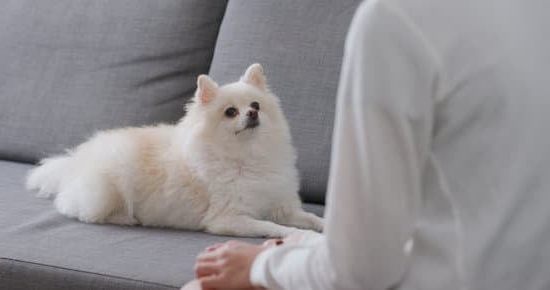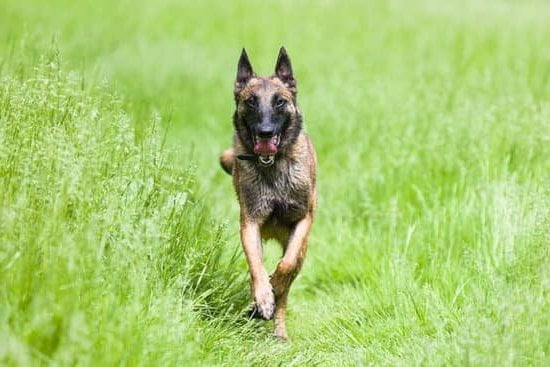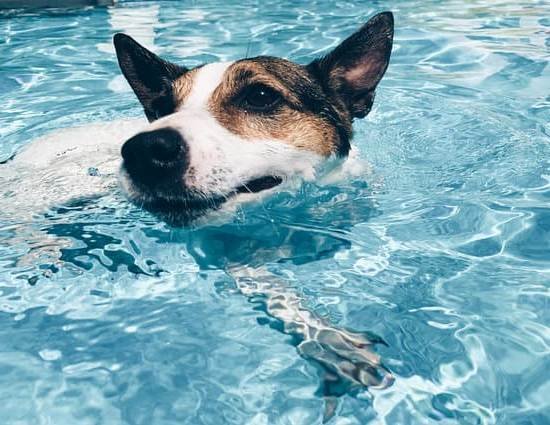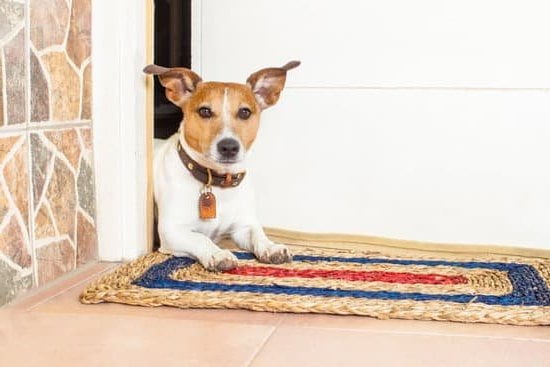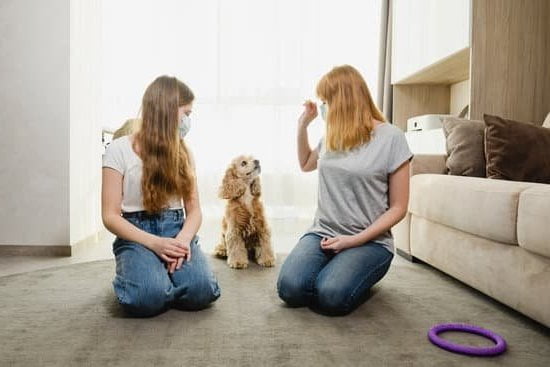Are you struggling with your furry friend leaving unwanted surprises on your carpet? Learning how to train dogs not to pee on the carpet is a common challenge for many pet owners. Understanding the reasons behind this behavior is crucial to effectively address and correct it. In this article, we will explore the importance of proper house training for dogs and provide helpful tips on establishing a consistent routine for your canine companion.
Housebreaking your dog is an essential aspect of responsible pet ownership. It not only helps maintain a clean and sanitary living environment but also strengthens the bond between you and your four-legged friend. By identifying the root cause of why dogs may pee on the carpet, whether it be due to anxiety, medical issues, or lack of proper training, pet owners can take proactive steps towards resolving this behavior.
Consistency is key when it comes to training your dog not to pee on the carpet. Establishing a routine that includes regular potty breaks, feeding schedules, and positive reinforcement techniques can help instill good habits in your furry friend.
By implementing crate training as a tool for housebreaking, pet owners can create a safe space for their dog while also preventing accidents in the house. Stay tuned as we delve deeper into effective training methods and tips for successful house training in the following sections.
The Importance of Proper House Training for Dogs
Proper house training is essential for dogs to learn where it is appropriate to relieve themselves, preventing accidents on carpets and other indoor surfaces. It is crucial for pet owners to understand the importance of consistent training methods in order to successfully teach their dogs where to go potty. House training not only helps maintain a clean and odor-free home, but it also promotes good behavior and strengthens the bond between owner and pet.
To effectively train dogs not to pee on the carpet, owners must be patient, consistent, and dedicate time and effort into implementing proper house training techniques. One key aspect of housebreaking involves identifying the root cause of the behavior. Dogs may pee on carpets due to a variety of reasons such as lack of proper training, anxiety, or medical issues. Understanding why your dog is exhibiting this behavior will help you address the issue more effectively.
Here are some strategies to implement when house training your dog:
- Create a routine: Establish set times for feeding, walks, and bathroom breaks
- Use positive reinforcement: Reward your dog with treats or praise when they eliminate outside
- Crate training: Utilize a crate as a tool for teaching bladder control
- Clean up accidents promptly: Use enzymatic cleaners to thoroughly remove urine odors and prevent dogs from re-soiling the same spot
By following these tips and consistently working with your dog, you can successfully train them not to pee on the carpet. Remember that every dog is different, so patience is key in this process. With dedication and perseverance, your furry friend will learn where it’s appropriate to go potty, leading to a happy and harmonious home environment.
Identifying the Root Cause of the Behavior
Identifying the root cause of a dog’s behavior is crucial in addressing and correcting the problem of peeing on the carpet. There could be various reasons why a dog may exhibit this behavior, ranging from medical issues to behavioral problems. One common cause is incomplete house training or inconsistency in routines.
Dogs thrive on structure and predictability, so any disruption in their routine can lead to accidents inside the house. Other possible causes include anxiety, stress, territorial marking, or simply a lack of understanding of where they should eliminate.
To effectively address the issue of dogs peeing on the carpet, it is essential to observe your pet’s behavior closely and try to identify any patterns or triggers that may be contributing to this unwanted behavior. Keep track of when accidents occur, how frequently they happen, and any changes in your dog’s environment or routine that may have triggered these incidents.
Consulting with a veterinarian can also help rule out any underlying medical conditions that may be causing your dog to urinate indoors.
Once you have identified the root cause of your dog’s behavior, you can then take steps to address it accordingly. Whether it’s implementing a consistent feeding and potty schedule, increasing exercise and mental stimulation, providing appropriate outlets for their energy, or addressing any anxiety or stressors in their environment – understanding why your dog is peeing on the carpet is the first step towards successful house training.
Remember that patience, consistency, and positive reinforcement are key components in correcting this behavior and teaching your furry friend where it is acceptable to go potty.
Establishing a Consistent Routine for Your Dog
When it comes to house training your dog and preventing them from peeing on the carpet, consistency is key. Dogs thrive on routine, so setting a consistent schedule for feeding, potty breaks, and exercise can help minimize accidents inside the house. By establishing a routine, you are helping your dog understand when and where they are supposed to go to the bathroom.
Setting Regular Potty Breaks
One of the most important aspects of establishing a consistent routine for your dog is setting regular potty breaks throughout the day. Depending on your dog’s age and breed, they may need to go out every few hours.
Take your dog outside first thing in the morning, after meals, before bedtime, and any time they show signs of needing to go like sniffing around or circling. Reward your dog with treats and praise when they relieve themselves outside to reinforce this desired behavior.
Monitoring Water Intake
Another important aspect of establishing a routine for your dog is monitoring their water intake. While it’s crucial for dogs to stay hydrated, limiting their water intake in the evening can help minimize accidents during the night.
Avoid leaving out a full bowl of water right before bedtime and take your dog out for one final potty break before settling in for the night. By being proactive in managing their water intake, you can reduce the likelihood of accidents occurring on the carpet while also promoting good health for your furry friend.
By following these guidelines and establishing a consistent routine for your dog, you will be well on your way to successfully training them not to pee on the carpet. Remember that patience and positive reinforcement are key components of any successful house training regimen. With time and dedication, you can help your dog develop good bathroom habits and create a harmonious living environment for both you and your pet.
Positive Reinforcement Training Methods for Housebreaking
Positive reinforcement training methods can be highly effective in teaching your dog not to pee on the carpet. By rewarding good behavior, you can encourage your furry friend to continue their positive actions. Here are some key strategies to implement:
- Use treats: When your dog successfully goes potty outside instead of on the carpet, immediately reward them with a tasty treat. This positive reinforcement helps them associate going outside with a yummy reward.
- Verbal praise: In addition to treats, make sure to give your dog plenty of verbal praise when they do their business in the right spot. Use an enthusiastic tone and pet them to show your approval.
- Consistency is key: Be consistent in rewarding good behavior every time your dog goes potty outside. This reinforces the association between going outside and receiving positive reinforcements.
By using these positive reinforcement techniques, you can effectively train your dog not to pee on the carpet. Remember that patience and consistency are crucial in this process as it may take time for your pup to fully grasp the concept.
- Be patient: House training takes time and effort, so remain patient throughout the process. Understand that accidents may happen, but consistency in training will pay off in the long run.
- Stay positive: Avoid scolding or punishing your dog for accidents on the carpet as this can create fear and confusion. Instead, focus on rewarding good behavior and showing them what is expected of them.
- Seek professional help if needed: If you’re struggling with housebreaking despite consistent efforts, consider seeking assistance from a professional dog trainer. They can provide guidance tailored to your specific situation and help you address any underlying issues causing accidents.
Overall, utilizing positive reinforcement techniques along with patience and consistency is key in successfully training dogs not to pee on the carpet. With dedication and proper guidance, you can help your furry companion learn appropriate bathroom behaviors and ensure a clean living environment for both of you.
Using Crate Training as a Tool for House Training
Introduction to Crate Training
Crate training is a valuable tool when it comes to house training your dog and preventing them from peeing on the carpet. A crate can serve as a safe and comfortable space for your dog, promoting good behavior and helping establish a routine. When used correctly, a crate can also aid in regulating your dog’s bathroom habits, ultimately reducing the chances of accidents inside the house.
Getting Started With Crate Training
To begin crate training your dog, introduce them to the crate gradually and make it a positive experience. Start by leaving the door open and placing treats or toys inside to entice your dog to enter. Once they are comfortable going in and out of the crate, you can start closing the door for short periods of time while you are home. Supervise your dog during this process to ensure they remain calm and relaxed.
Using the Crate for House Training Purposes
When it comes to preventing your dog from peeing on the carpet, utilize the crate as a way to control their access to certain areas of the house. Supervise your dog closely when they are out of the crate, and if you notice any signs that they need to go potty, immediately take them outside to their designated spot.
By establishing a routine that includes frequent potty breaks and utilizing the crate effectively, you can help train your dog not to pee on the carpet over time.
Cleaning Up Accidents Properly to Prevent Repeat Offenses
Cleaning up accidents properly is a crucial step in preventing repeat offenses when house training your dog. Accidents happen, especially during the initial stages of training, but how you respond to them can make a significant difference in your dog’s learning process. The key is to remove any traces of urine or feces to eliminate the scent that may trigger your dog to go in the same spot again.
One effective way to clean up accidents on carpet is by using an enzymatic cleaner specifically designed for pet messes. These cleaners break down the organic compounds in urine and feces, eliminating both the stain and odor effectively. Avoid using cleaners with ammonia or bleach as they can actually worsen the smell and may encourage your dog to revisit the spot.
When cleaning up accidents, be thorough in your approach. Blot up as much of the urine or feces as possible with paper towels before applying the cleaning solution. Follow the instructions on the cleaner carefully and allow it to sit for an adequate amount of time to work its magic. Once the area is clean and dry, discourage your dog from going back to that spot by using deterrent sprays or placing aluminum foil over it temporarily.
| Proper Cleaning Methods | Effectiveness |
|---|---|
| Use enzymatic cleaners | Highly effective in removing stains and odors |
| Avoid cleaners with ammonia or bleach | Prevents worsening of odors and revisiting of spots |
Additional Tips and Tricks for Successful House Training
House training a dog not to pee on the carpet can be a challenging task, but with the right techniques and consistency, it is definitely achievable. In addition to crate training and positive reinforcement methods, there are some additional tips and tricks that can help make the process smoother for both you and your furry friend.
One important tip is to closely monitor your dog’s behavior and schedule, especially during the initial stages of house training. By keeping a close eye on when your dog eats, drinks, plays, and goes potty, you can start to establish a routine that works best for both of you.
Another helpful tip is to provide ample opportunities for your dog to relieve themselves in the appropriate outdoor area. Take your dog outside frequently, especially after meals or playtime, so they have plenty of chances to go potty in the right spot. Remember to praise and reward them every time they go potty outside to reinforce this behavior positively. Consistency is key when it comes to house training, so try to stick to a regular schedule as much as possible.
Additionally, consider using belly bands or diapers for male dogs who may have more accidents indoors due to marking territory or other reasons. These can help prevent accidents on the carpet while you work on training your dog to go potty outside.
It’s also important to remain patient throughout the house training process – accidents will happen, but it’s essential to stay calm and continue with positive reinforcement techniques. With time and dedication, your dog will learn where it’s acceptable to go potty and how to avoid accidents on the carpet.
Conclusion
House training a dog can sometimes be a challenging task, especially when it comes to preventing them from peeing on the carpet. However, by understanding the root cause of this behavior and implementing consistent routines, positive reinforcement training methods, and crate training, you can effectively teach your furry companion where it is appropriate to do their business. It’s essential to remain patient throughout the process and celebrate every small success along the way.
One of the key aspects of successfully house training your dog is identifying the root cause of their behavior. Whether it’s due to anxiety, lack of proper training, or medical issues, understanding why your dog is peeing on the carpet will help you address the problem more effectively. By establishing a consistent routine for your dog that includes regular bathroom breaks outside and feeding times, you can help them learn when and where they should go potty.
Positive reinforcement training methods are also crucial in teaching dogs not to pee on the carpet. By rewarding good behavior with treats, praise, or playtime, you can encourage your dog to continue doing the right thing. Additionally, using crate training as a tool for housebreaking can help prevent accidents inside the house while giving your dog a safe and comfortable space to rest.
Remember that consistency is key in training your dog, so stay patient and keep at it until they fully understand where they should do their business. With time, effort, and a lot of love, you can successfully train your furry friend not to pee on the carpet.
Frequently Asked Questions
How Do I Stop My Dog From Peeing on the Carpet?
To stop your dog from peeing on the carpet, start by thoroughly cleaning any previous accidents to remove any lingering scent. Establish a consistent potty routine and take your dog out frequently. Supervise your dog closely indoors and if you catch them in the act, redirect them outside.
How Do I Train My Dog Not to Pee on the Rug?
Training your dog not to pee on the rug involves proper potty training techniques. Create a designated bathroom area outside for your dog and reward them for eliminating there. Use positive reinforcement such as treats or praise when they go potty in the right spot. Consistency is key in reinforcing good behavior.
Should I Punish My Dog for Peeing on the Carpet?
Punishing your dog for peeing on the carpet is not recommended as it can create fear or anxiety in your pet. Dogs do not understand punishment after the fact and it can lead to confusion and stress. Instead, focus on positive reinforcement when they eliminate in the correct place to encourage good habits.

Welcome to the blog! I am a professional dog trainer and have been working with dogs for many years. In this blog, I will be discussing various topics related to dog training, including tips, tricks, and advice. I hope you find this information helpful and informative. Thanks for reading!

